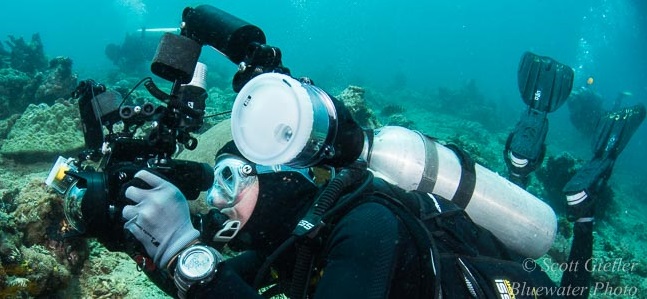Flash Triggers & Underwater Strobes
May 25
A discussion on Flash Triggers, and the different ways to fire strobes
Today I want to talk about flash triggers, TTL, and a little history of how photographers used to fire their strobes underwater.
Back in the day, to fire strobes quickly you needed an electronic sync cord, which went from your camera hot shoe, through a hole in the housing called a “bulkhead”, to your strobe. Sync cords often flooded, or got corroded. Underwater housing maintenance was extremely important. The advantage, was that you could fire quickly, as there was no internal camera flash that had to “recycle”. You were limited by just your camera buffer, memory card write speed, and of course your strobe recycle time.
Eventually, as internal flashes could fire faster, and strobes advanced, fiber optic cables became more popular. With fiber optics, no sync cord or bulkhead was needed, the only requirement was that you could pop up your camera’s internal flash inside the housing. Some strobes even supported basic TTL (Through the Lens) functionality through the fiber optic connection. TTL means that your strobes or TTL converter can set the strobe exposure automatically, instead of the photographer having to dial in a particular strobe power.
Now in 2019, we have flash triggers. Flash triggers sit on the hot shoe of the camera, and fire a weak flash of light similar to an internal flash, but with the ability to fire quickly. Flash triggers have the advantage of being corrosion-free like fiber optic cables, but fast-firing like electronic sync cords. However, they do have their disadvantages – they can stop working, batteries in the flash trigger can die, and some fiber optic cables don’t transmit the weak flash well. The good news, is that these downsides are improving and this year’s flash triggers, like the Nauticam flash triggers, are better than ever. There is also a new Fantasea flash trigger that can work with several different cameras.
Some flash triggers are even building in TTL technology, so you get a flash trigger and a TTL converter in one unit. Check out this impressive Sea & Sea TTL converter demo.
Of course, having a fast method of firing your strobes doesn’t really matter if your strobe can’t keep up, even if you are shooting with the best dSLR camera. That’s the advantage of using a fast-recycle time strobe like the Ikelite DS-160 strobe, I wish I had one while diving Socorro Island recently with all the fast moving sharks and manta rays in front of me.
I have one word of parting advice – whether you use sync cords, a flash trigger, or just fiber optics, have a backup method! – Scott





Related Articles
Popular Articles